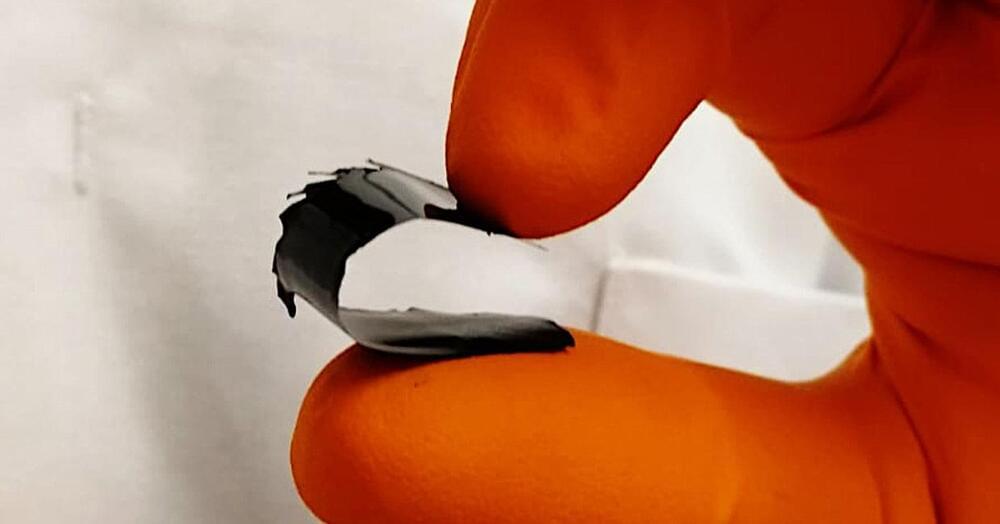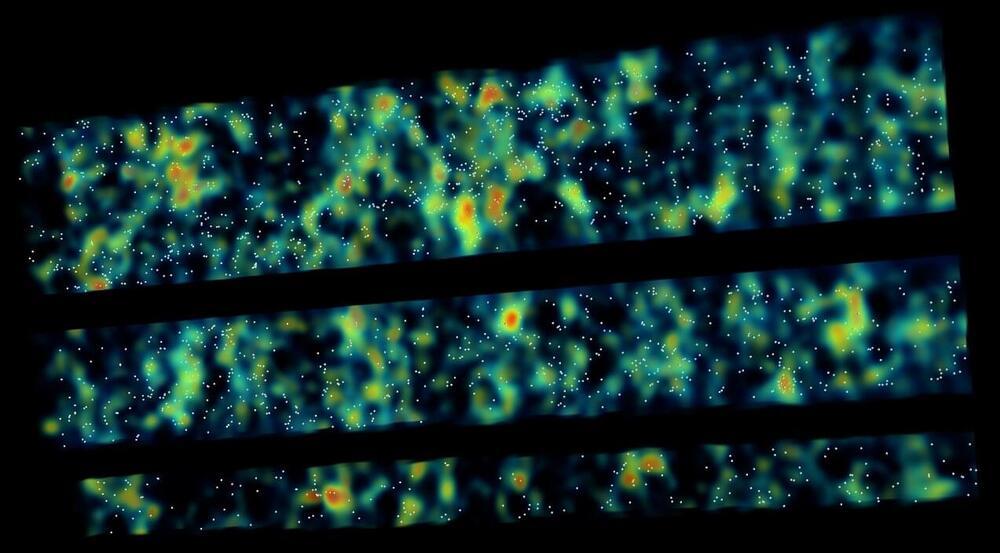Scientists at ETH Zurich designed a push-button device that lets patients control cell-based therapies with the push of a button, using a piezoelectric device.
Get the latest international news and world events from around the world.
ENGAGE Reveals First Look at ‘Link’ Metaverse Platform for Enterprise & Education
ENGAGE, the XR education and enterprise metaverse company, today unveiled its Link social platform which the company calls a “fully featured corporate metaverse.”
Previously codenamed Oasis when it was first revealed in June 2021, the Ireland-based studio calls Link a “professional metaverse,” as it was designed to host persistent virtual worlds which serve as gateways to individual spaces where employees, students and individual users can interact.
The studio published a six-minute first look at Link today, shown below:
MEDUSA‘ dual robot’ drone flies and dives to collect aquatic data
Researchers at Imperial College London have developed a new dual drone that can both fly through air and land on water to collect samples and monitor water quality. The researchers developed a drone to make monitoring drones faster and more versatile in aquatic environments.
The ‘dual robot’ drone, tested at Empa and the aquatic research institute Eawag in Switzerland, has successfully measured water in lakes for signs of microorganisms and algal blooms, which can pose hazards to human health, and could in the future be used to monitor climate clues like temperature changes in Arctic seas.
The unique design, called Multi-Environment Dual robot for Underwater Sample Acquisition (MEDUSA), could also facilitate monitoring and maintenance of offshore infrastructure such as subsea pipelines and floating wind turbines.


Meet The High-Tech Urban Farmer Growing Vegetables Inside Hong Kong’s Skyscrapers
Hong Kong, a densely populated city where agriculture space is limited, is almost totally dependent on the outside world for its food supply. More than 90% of the skyscraper-studded city’s food, especially fresh produce like vegetables, is imported, mostly from mainland China. “During the pandemic, we all noticed that the productivity of locally grown vegetables is very low,” says Gordon Tam, cofounder and CEO of vertical farming company Farm66 in Hong Kong. “The social impact was huge.”
Tam estimates that only about 1.5% of vegetables in the city are locally produced. But he believes vertical farms like Farm66, with the help of modern technologies, such as IoT sensors, LED lights and robots, can bolster Hong Kong’s local food production—and export its know-how to other cities. “Vertical farming is a good solution because vegetables can be planted in cities,” says Tam in an interview at the company’s vertical farm in an industrial estate. “We can grow vegetables ourselves so that we don’t have to rely on imports.”
Tam says he started Farm66 in 2013 with his cofounder Billy Lam, who is COO of the company, as a high-tech vertical farming pioneer in Hong Kong. “Our company was the first to use energy-saving LED lighting and wavelength technologies in a farm,” he says. “We found out that different colors on the light spectrum help plants grow in different ways. This was our technological breakthrough.” For example, red LED light will make the stems grow faster, while blue LED light encourages plants to grow larger leaves.

Ink coating could enable devices powered by heat
Researchers in Sweden report that they are closing in on a way to replace batteries for wearables and low-power applications in the internet of things (IoT). The answer lies in an ink coating that enables low-grade heat, which is generated by devices, to be converted to electrical power.
Publishing in Applied Materials & Interfaces (“Thermoelectric Inks and Power Factor Tunability in Hybrid Films through All Solution Process”), the researchers from KTH Royal Institute of Technology in Stockholm report that they have developed a promising blend of thermoelectric coating for devices that generate heat amounting to less than 100 oC.
A piece of film is coated in thermoelectric ink. (Image: KTH The Royal Institute of Technology)

Previously hidden protoclusters could reveal new details of galaxy evolution
The ancestors of some of the largest galaxy clusters have been hiding in plain sight. New work led by Carnegie’s Andrew Newman demonstrates a new technique for identifying the precursors of the most extreme galactic environments. The team’s findings are published in Nature.
Like all of us, galaxies are shaped and molded by their surroundings. To obtain a complete picture of the various physical influences on a galaxy’s lifecycle, it’s crucial to trace the emergence of properties caused by environmental factors as they arise.
“We’ve known for a long time that the colors, masses, and shapes of galaxies depend on their cosmic environment, but there’s a lot we don’t know about when and how those differences appeared,” Newman said.
There Could Be Four Hostile Civilizations in the Milky Way
In 1977, the Big Ear Radio Telescope at Ohio State University picked up a strong narrowband signal from space. The signal was a continuous radio wave that was very strong in intensity and frequency and had many expected characteristics of an extraterrestrial transmission. This event would come to be known as the Wow! Signal, and it remains the strongest candidate for a message sent by an extraterrestrial civilization. Unfortunately, all attempts to pinpoint the source of the signal (or detect it again) have failed.
This led many astronomers and theorists to speculate as to the origin of the signal and what type of civilization may have sent it. In a recent series of papers, amateur astronomer and science communicator Alberto Caballero offered some fresh insights into the Wow! Signal and extraterrestrial intelligence in our cosmic neighborhood. In the first paper, he surveyed nearby Sun-like stars to identify a possible source for the signal. In the second, he estimates the prevalence of hostile extraterrestrial civilizations in the Milky Way Galaxy and the likelihood that they’ll invade us.
Almost fifty years after it was detected, the Wow! Signal continues to tantalize and defy explanation. In recent years, attempts have been made to attribute it to comets at the edge of our Solar System, an explanation that the astronomical community has since rejected. In 2020, interest in this candidate ETI signal was revitalized when Cabellaro identified a Sun-like star in the vicinity of the sky where the Wow! Signal was detected. If the analysis is correct, this famous signal may have come from a Sun-like star located 1,800 light-years away.

Physicists make leaps in reading out qubits with laser light
Qubits are a basic building block for quantum computers, but they’re also notoriously fragile—tricky to observe without erasing their information in the process. Now, new research from the University of Colorado Boulder and the National Institute of Standards and Technology (NIST) could be a leap forward for handling qubits with a light touch.
In the study, a team of physicists demonstrated that it could read out the signals from a type of qubit called a superconducting qubit using laser light, and without destroying the qubit at the same time.
The group’s results could be a major step toward building a quantum internet, the researchers say. Such a network would link up dozens or even hundreds of quantum chips, allowing engineers to solve problems that are beyond the reach of even the fastest supercomputers around today. They could also, theoretically, use a similar set of tools to send unbreakable codes over long distances.